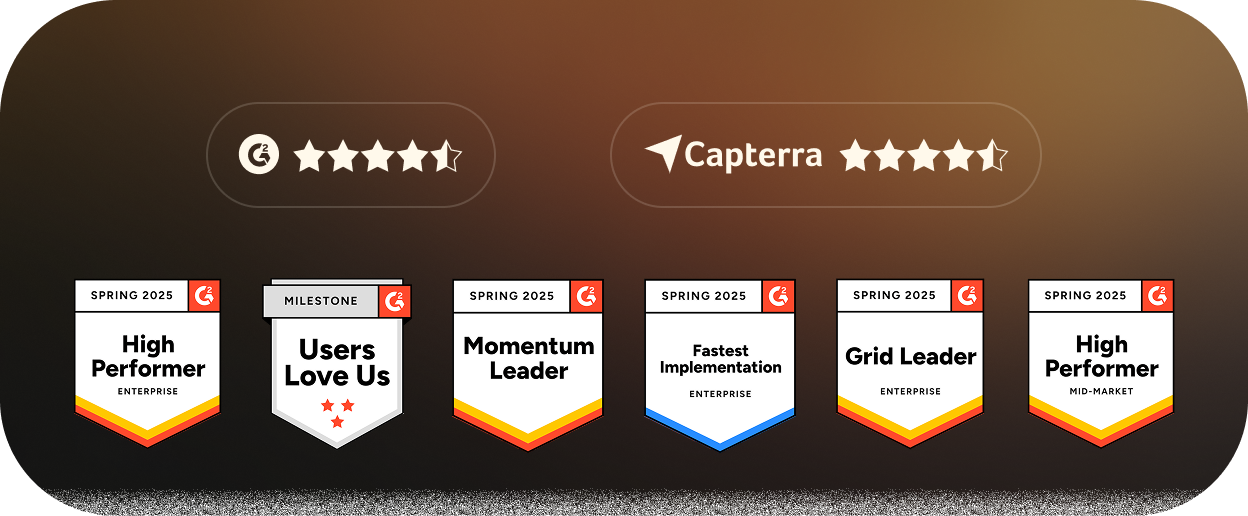
Glosario
Plum - Plataforma de recompensas, incentivos y pagos
Automatización de premios
La automatización de los incentivos representa un enfoque de vanguardia para racionalizar y optimizar la gestión de los programas de incentivos dentro de diversos marcos organizativos.
Este glosario pretende desmitificar el concepto de automatización de la retribución, explorando su significado, las tecnologías subyacentes y el impacto transformador que puede tener en la mejora de la eficiencia y la eficacia en la administración de los sistemas de retribución.
What does rewards automation mean?
Rewards automation is the process of leveraging technology and software solutions to efficiently administer, track, and deliver incentives within organizations.
It encompasses the automation of tasks related to reward programs, including recognition, point accrual, redemption, and reporting.
¿Cómo funciona la automatización de las recompensas?
La automatización de las recompensas implica el uso de la tecnología para agilizar y gestionar el proceso de reconocimiento, entrega y seguimiento de las recompensas. El proceso suele incluir:
- Recognition and approval: Automated systems enable managers or peers to initiate recognition for employees' achievements or contributions. Approvals can also be automated, ensuring a swift and consistent process.
- Points accumulation: Some systems use a points-based approach where individuals accrue points for various achievements or actions. Automation tracks and updates these points in real-time.
- Redemption options: Recipients can redeem accumulated points or rewards through an automated platform, selecting from a catalog of offerings such as gift cards, merchandise, or experiences.
- Communication: Automated notifications and alerts keep recipients informed about their earned rewards, upcoming milestones, or redemption opportunities.
- Data analytics: The automation system often includes analytics capabilities, providing insights into employee engagement, popular rewards, and the overall effectiveness of the rewards program.
What are the benefits of using automated rewards for businesses?
Below are the key benefits of using automated rewards:
- Time and cost efficiency: Automates repetitive reward tasks, reducing manual effort and operational costs.
- Real-time delivery: Rewards can be triggered instantly based on specific user actions or milestones.
- Scalability: Easily handles large volumes of rewards across customers, partners, or employees.
- Improved accuracy: Minimizes human error in reward calculations or distribution.
- Enhanced engagement: Timely and relevant rewards boost user satisfaction and loyalty.
- Data-driven personalization: Uses behavior and performance data to tailor rewards effectively.
- Seamless integration: Works across platforms like CRMs, e-commerce systems, and HR tools for unified workflows.
Where is rewards automation commonly used?
La automatización de las recompensas se emplea habitualmente en diversos contextos organizativos, entre ellos:
- Corporate settings: Many corporations use rewards automation to recognize and motivate employees for their contributions, fostering a positive work environment.
- Sales and performance management: Sales teams often benefit from rewards automation to acknowledge and incentivize high performers, driving sales targets.
- Customer loyalty programs: Organizations implement rewards automation to manage customer loyalty programs efficiently, providing incentives for repeat business.
- Employee recognition programs: Companies across industries leverage rewards automation to streamline employee recognition programs, promoting a culture of appreciation.
- Health and wellness programs: In the healthcare sector, rewards automation may be used to encourage healthy behaviors among employees, patients, or members.
What security measures are available to safeguard automated rewards from potential vulnerabilities?
Security measures are in place to safeguard automated rewards from potential vulnerabilities.
- Blockchain security: The inherent security features of blockchain, such as cryptographic hashing and decentralization, contribute to safeguarding automated rewards. The immutability of the distributed ledger ensures that once rewards are distributed, the transaction history is secure and tamper resistant.
- Encryption and secure channels: Automated rewards platforms often employ advanced encryption techniques to secure communication channels between users and the system. This protects sensitive information and ensures that reward transactions are conducted securely.
- Auditability and transparency: The transparent nature of blockchain enables participants to audit reward transactions. Users can verify the legitimacy of their rewards, promoting transparency and building trust. This auditability acts as a deterrent to fraudulent activities and ensures the integrity of the reward system.
What are the challenges associated with implementing rewards automation?
Los retos asociados a la implantación de la automatización de las recompensas pueden incluir:
- Integration complexity: Integrating rewards automation with existing systems, such as HR or CRM software, can be complex and may require careful planning.
- User adoption: Employees or users may initially face challenges in adapting to a new rewards automation system, requiring effective communication and training.
- Data security: The handling of sensitive data, such as personal information and reward preferences, requires robust security measures to protect user privacy.
- Customization needs: Organizations may face challenges if their specific reward structures or program requirements demand extensive customization beyond the capabilities of the chosen automation platform.
- Cost considerations: Implementing rewards automation may involve initial setup costs and ongoing expenses, and organizations need to assess the return on investment.
















